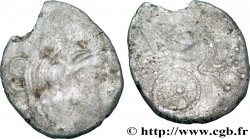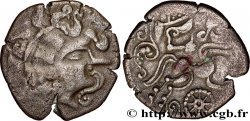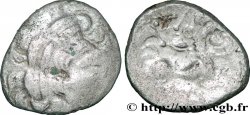bga_763639 - REDONES (Area of Rennes) Quart de statère de billon, classe IV, fragmentaire
500.00 €(Approx. 535.00$ | 430.00£)
Quantity
Add to your cart

Type : Quart de statère de billon, classe IV, fragmentaire
Date: c. 80-50 AC.
Metal : billon
Diameter : 14 mm
Orientation dies : 11 h.
Weight : 1,27 g.
Rarity : R3
Coments on the condition:
Monnaie frappée sur un flan ovale, avec une jolie tête détaillée au droit. Patine grise
Catalogue references :
Obverse
Obverse legend : ANÉPIGRAPHE.
Obverse description : Tête laurée à droite, la chevelure abondante.
Reverse
Reverse legend : ANÉPIGRAPHE.
Reverse description : Cheval androcéphale conduit à droite par un aurige, tenant les rênes et le fouet ; entre les jambes, une rouelle.
Commentary
Le n° 615 de MONNAIES 28, le premier quart de statère des Rédons publié, était alors inédit. Cet exemplaire n’est que le troisième que nous proposons à la vente.
Si presque tous les peuples armoricains ayant un monnayage de billon avaient leurs quarts de statère plus ou moins rares qui leur étaient attribués, aucun quart de statère de billon n'était connu pour les Rédons ; c'est désormais chose faite avec ce quart de billon !.
Si presque tous les peuples armoricains ayant un monnayage de billon avaient leurs quarts de statère plus ou moins rares qui leur étaient attribués, aucun quart de statère de billon n'était connu pour les Rédons ; c'est désormais chose faite avec ce quart de billon !.







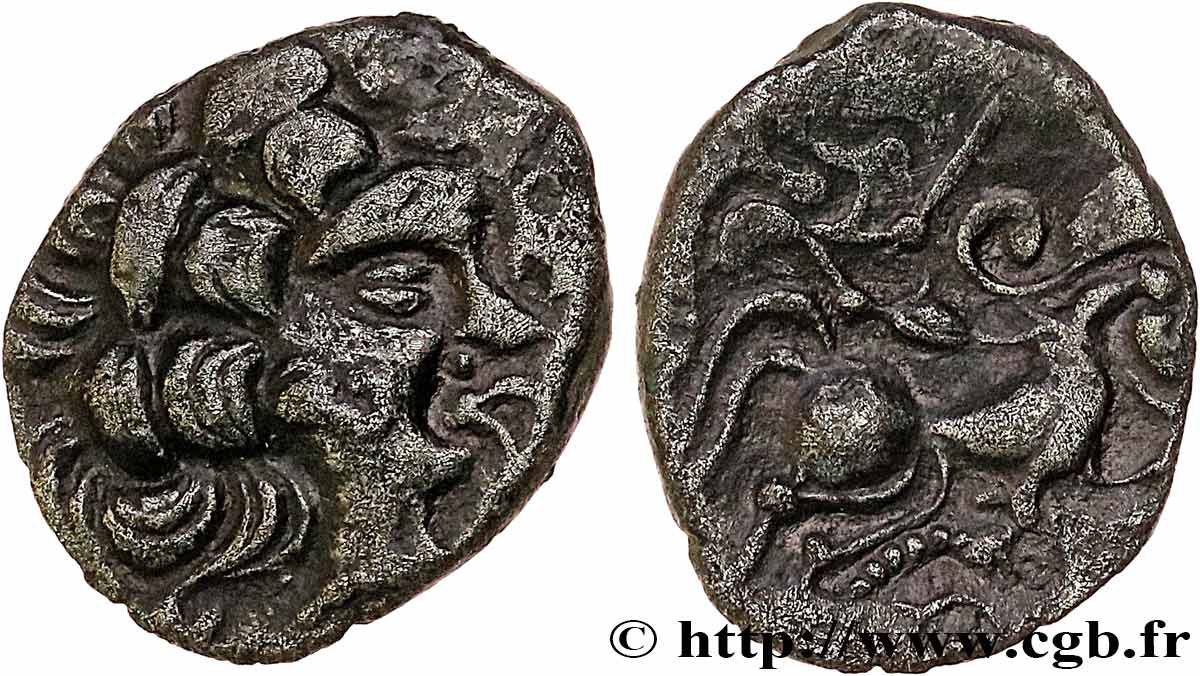
 Report a mistake
Report a mistake Print the page
Print the page Share my selection
Share my selection Ask a question
Ask a question Consign / sell
Consign / sell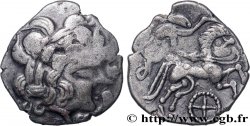
 Full data
Full data